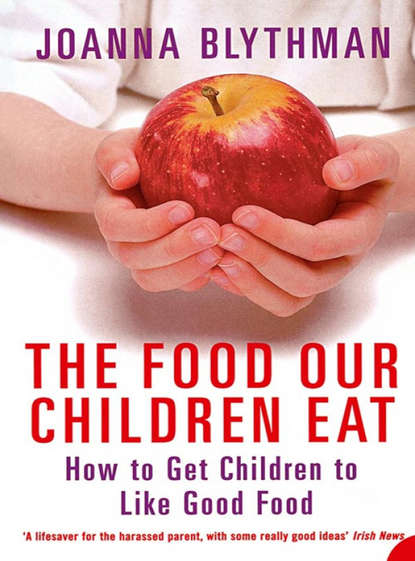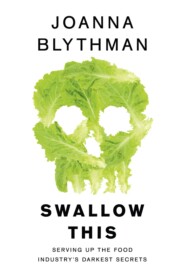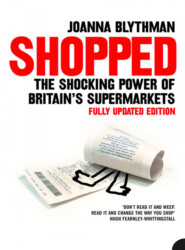По всем вопросам обращайтесь на: info@litportal.ru
(©) 2003-2024.
✖
The Food Our Children Eat: How to Get Children to Like Good Food
Настройки чтения
Размер шрифта
Высота строк
Поля
A menu of modern school meals classics
For main course:
TURKEY/CHICKEN KIEVS/NUGGETS, SPAGHETTI AND POTATO SHAPES
(Cheap, processed, intensively reared meat in fatty fried crumb coating; sweet, stodgy tinned spaghetti; reconstituted dried potato and additives in fatty coating)
HOT DOG ROLL/SAUSAGE ROLL, BEANS AND POTATO SHAPES
(More cheapest of the cheap meat full of additives and water, stuck in a pappy, over-refined white roll or coated with artery-clogging, fat-laden pastry, with sweet and salty beans, plus spuds as above for added stodge)
VEGETABLE CURRY, MIXED VEG AND RICE
(This more promising-sounding vegetarian alternative consists of frozen ready-cut vegetables defrosted in sweet, starch-thickened catering curry sauce with waterlogged frozen vegetable ‘macedoine’ and gluey white rice)
CHEESE AND BACON/BROCCOLl/SWEETCORN FLAN, TURNIP, POTATOES
(Rubbery Cheddar, miscellaneous ‘savoury’ ingredients and reconstituted dried egg in a greasy layer of under-cooked pastry, with boiled diced turnip – about the cheapest frozen vegetable that can be bought in and about the least likely to appeal to children – with a scoop of rehydrated ‘mashed’ potatoes)
SAVOURY PASTIE, PEAS, CHIPS
(An unidentifiable-by-ingredient mulch combining processed meat such as corned beef or starchy potatoes with industrial fillers and flavourings, encased in lardy pastry; watery peas and reheated chips)
MEAT CASSEROLE, CABBAGE, POTATO
(A small amount of meat, often sausage, in thickened starchy sauce with frozen vegetables; boiled-to-death cabbage and the regulation scoop of rehydrated mash)
ROAST MEAT AND POTATOES, SPROUTS
(Pre-cooked, thinly sliced meat reheated in catering brown sauce, ready-cooked roasted potatoes and sulphurous, over-cooked sprouts)
‘HOME-MADE PIZZA’
(Thin slices of ready-made catering dough topped with watered-down tomato paste and rubbery Cheddar, then baked)
BATTERED FISH WITH TOMATO
(A small amount of desirable white fish dwarfed by its fatty batter, served with unadorned tinned tomatoes)
For pudding:
JELLY WHIP
(Shuddery synthetic dessert containing a litany of additives and no real anything else apart from generous amounts of sugar and gelatine)
DOUGHNUT AND CUSTARD
(Deep-fried, sugary stodge lubricated with extra sugar, colourings and flavourings, plus sugary, additive-laden ‘custard’, usually from a just-add-water mix)
CHOCOLATE CRISPIE/ICED SPONGE/CARAMEL FLAN/FLAPJACK/GINGERBREAD AND CUSTARD
(As above, minus the frying)
SEMOLINA AND FRUIT
(Lumpy milk pudding which rarely appeals to children, even in its unlumpy form, served with sweetened tinned fruit)
‘HOME BAKING’
(Cup cakes and tray bakes which are heavy on sugar, margarine and refined white flour)
To drink:
CARTONS OF FRUIT SQUASH AND ‘DRINK’/ BLACKCURRANT DRINK/COLA/CARBONATED ORANGE
(A heavy-handed serving of sugar topped up with water and additives)
HOT CHOCOLATE/MILK SHAKE
(Sugar, milk powder, flavourings and thickeners mixed up with water)
It’s no wonder that many children loathe school meals and abandon them at the first possible opportunity. But what about other school food?
School tuck shops have not served anything other than sweets, crisps and fizz since time immemorial. Nothing has changed in that department, except perhaps for the arrival of grain-based biscuits which purport to be healthy but whose heavy-handed sugar composition gives the lie to that.
What is new, however, is the arrival of snack and drink vending machines in schools. Filled exclusively with everything that is the antithesis of wholesome eating, these machines are becoming a common feature in many secondary and even some primary schools. Most teachers disapprove of them, but when a school is strapped for cash the income they offer can be tempting.
Looking at a secondary school in Merseyside in 1998, the Guardian reported that the profit to the school from its eight vending machines was forecast at £15,000 a year. Revenue on this scale can keep a music department in musical instruments or buy a much needed piece of equipment. But this system also handicaps the more wholesome alternative. In many schools nowadays, the only place a child can get a free and straightforward drink of tap water is in the washrooms!
School food has got so bad that it looks as if the government will reintroduce nutritional standards at least for school meals, if not for tuck shops. It remains to be seen how effective these will be in tackling the unhealthy monster that school meals have become.
But in the meantime, the current nature of school catering means that parents cannot assume that there is anything reasonably wholesome on offer on a regular basis.
How can we react to this? For solutions, turn to:
• School Food (pages 189–96)
• Twenty-five Good Snacks (pages 237–8)
• Ten Good Packed Lunches (pages 259–62)
CHILD (UN)FRIENDLY RESTAURANTS (#ulink_35c0ff18-c661-5ac7-95bf-3f5eda06e048)
Children in restaurants? Perish the thought! Our traditional ‘serious’ restaurant culture is not like that in other parts of the world, where children and restaurants are seen as two facets of normal life that can happily cohabit. British culture has always viewed restaurant-going as something special and unusual – an overwhelmingly sophisticated adult activity. As a nation we do not always find it ‘chic’ to have children around when we go out to eat. We tend to see them as philistines who ought to be fed separately in the privacy of their own homes until they attain civilised adulthood.
So we can’t pop out to the accommodating French bistro, which will prop up children on cushions and serve them moules marinière and a massive napkin without flinching. Nor can we drop in to family-run Italian ristorante, where adults cluck with approval as your baby noisily sucks up linguine with tomato sauce splattering everywhere. Neither is it like India or China, where family groups meet in restaurants and feed prime mouthfuls of their food to the youngest members.
It’s not unknown in the UK for some restaurants to have explicit ‘No children’ policies, while to take a child to others may entail pleading, negotiation and compromise: ‘Yes, we will be finished by 8.45 pm (so as not to disturb your business clientele),’ or ‘Yes, we will accept a freezing table more or less out in the lobby where no one else can see us.’ Many other establishments simply make it so expensive to bring children – by refusing to offer half-portions or make any concession to smaller appetites in their price structure – that they effectively prevent them from coming, without saying so in so many words.










